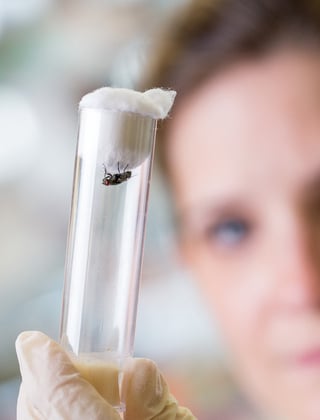Genetic Evaluation Services

AWI supports services to assist woolgrowers select sheep and optimise genetic gain using a range of genetic evaluation tools.
AWI supports services to assist woolgrowers select sheep and optimise genetic gain using a range of genetic evaluation tools.
There are five steps to follow in the hunt for cost effective genetic gain.
- Step 1: Establish / review your flock breeding objective for the next 10 years. Keep it brief.
- Step 2: Benchmark your performance in all your key traits.
- Step 3: Monitor and evaluate your performance against the goals
- Step 4: Is your gain cost effective
- Step 5: Talk with your ram breeder / advisor about your goals, back to step 1
Genetic Evaluation Tools
The following genetic evaluation tools provide woolgrowers with comprehensive information to benchmark your progress in association with your classer / advisor / ram seller.
Merino Bloodline Performance
Merino Bloodline Performance allows woolgrowers to compare Merino bloodlines based on the results of wether and ewe trials, run across Australia.
Merino Bloodline Performance highlights the diversity in wool production, wool quality and profitability for a wide range of bloodlines and allows woolgrowers to compare the strengths and weaknesses of each bloodline.
The 2018 results demonstrate significant variation in production between the 73 bloodlines, with a range of 3.6 µm in fibre diameter, 28% in clean fleece and 13% in liveweight. These production differences translate into very significant differences in bloodline profitability.
Further Information
View the latest Merino Bloodline Performance Results by navigating to the website, then scrolling down to view the latest Analysis Reports.
View other wether and ewe trail reports or you can download copies:
Merino Superior Sires
The Australian Merino Sire Evaluation Association runs Merino Sire Evaluation by comparing the progeny of 12 to 15 sires at a specific site over 2 years. The association produces annual reports that are published on the Merino Superior Sires website. There are 10 sites across Australia.
The sites are run by local committees who make a considerable contribution through in kind labour. Additional running costs are covered by sire entrant fees which range from $3,000 to $5,000 per sire between the sites. Collectively, the sites are overseen by the Australian Merino Sire Evaluation Association (AMSEA) Executive Committee made up of site representatives, AWI, MLA, and the Executive Officer. AWI funds the operations of the Executive.
Individual sires are joined through artificial insemination to 50 to 60 ewes. The ewes are randomly drawn from a consistent, well classed line of ewes to avoid bias. Link sires allow sires to be compared between years and between sites. Results are reported annually at a site field day and a Site Report on all assessments, including sire means and Flock Breeding Values, is produced and placed on the Merino Superior Sires website.
AMSEA produces an annual Merino Superior Sires publication which includes all AMSEA data combined with on-farm (ram breeder) data relating to the relevant sires.
Further Information
- Find out more about sire evaluation on the Merino Superior Sires website.
- Merino Sire Evaluation Site reports compare the performance of sire.
- Read our Beyond the Bale article from Dec 2021 about Merino Sire Evaluation here.
MERINOSELECT
MERINOSELECT is the national genetic information and benchmarking service for the Merino industry. The service provides a single national language in the form of "across flock" Australian Sheep Breeding Values (ASBVs).
Ram breeders and commercial woolgrowers can use these breeding values to compare the genetic potential of rams and ewes for a range of commercial traits, independent of the environment and location.
MERINOSELECT is managed by Sheep Genetics, as part of Meat and Livestock Australia (MLA), and is based in Armidale NSW.
Further Information
- Visit the Sheep Genetics website for more information about MERINOSELECT, including the latest ASBVs
- Visit the MERINOSELECT animal websearch
- MERINOSELECT Service Providers can help you to collect measurements and manage your data on a fee-for-service basis
- Check out the resources available at the Sheep Genetics Resources page.
- Annual genetic trends of key MERINOSELECT ASBVs and record numbers for the three breech traits
DOHNE MERINO
DOHNE MERINO is the national genetic information and benchmarking service for the Dohne Merino breed. The database uses the same structure as MERINOSELECT and is managed by Sheep Genetics.
A Dohne ASBV describes the expected performance of a Dohne' s progeny for a trait relative to the performance of all Registered Australian Dohne ram breeding flocks.
Sheep Genetics reports two standard indices for the DOHNE MERINO analysis; the Dohne Base index and the Dohne Plus index. Both indices were developed in conjunction with the Australian Dohne Breeders Association (ADBA), as well as using feedback from Dohne breeders to identify economic breeding objectives in commercial Dohne flocks.
Further Information
- Visit the Sheep Genetics website for more information about DOHNE
- DOHNE Service Providers can help you to collect measurements and manage your data on a fee-for-service basis
- Visit the DOHNE animal websearch
- Check out the resources available at Sheep Genetics Resources page.















